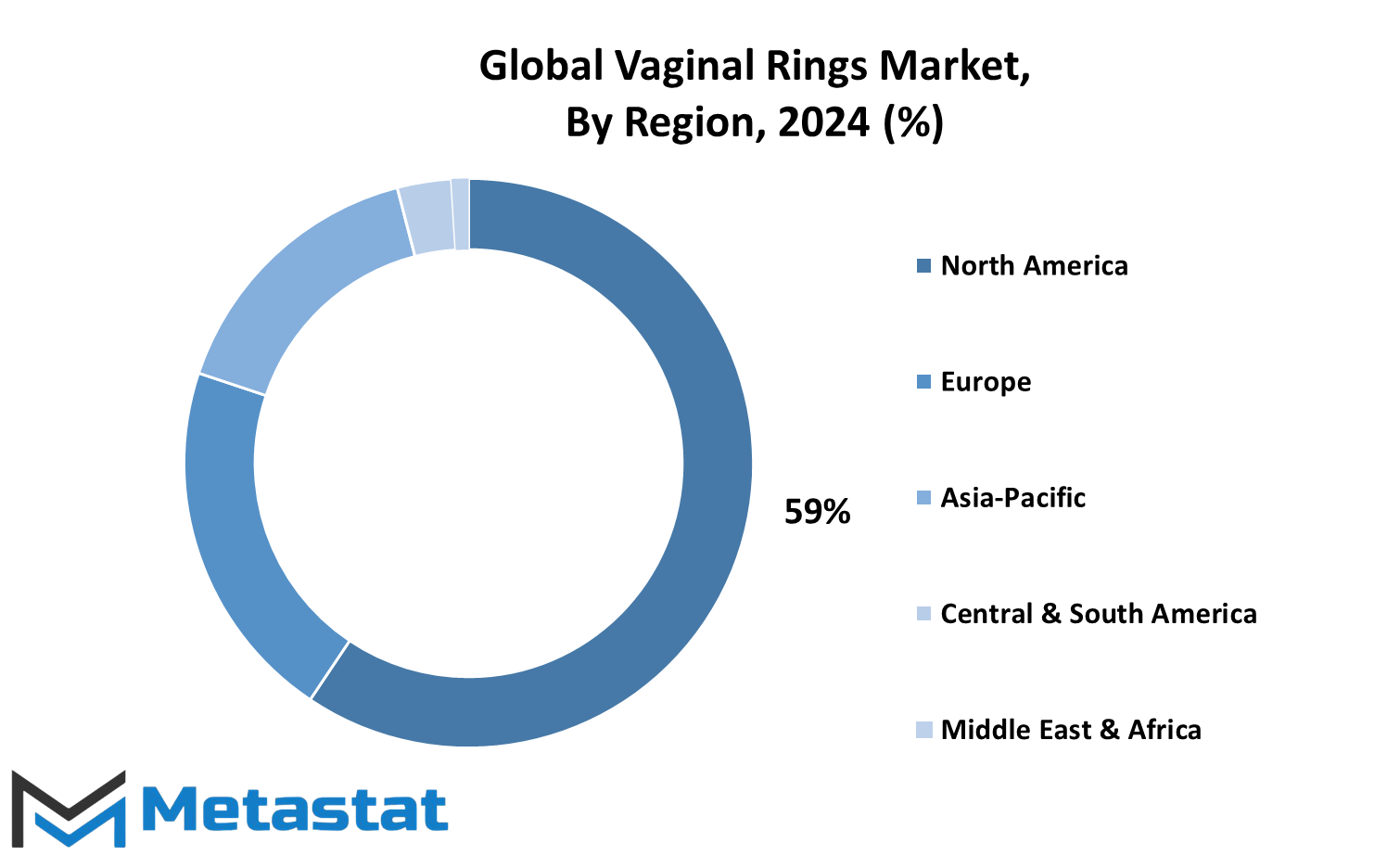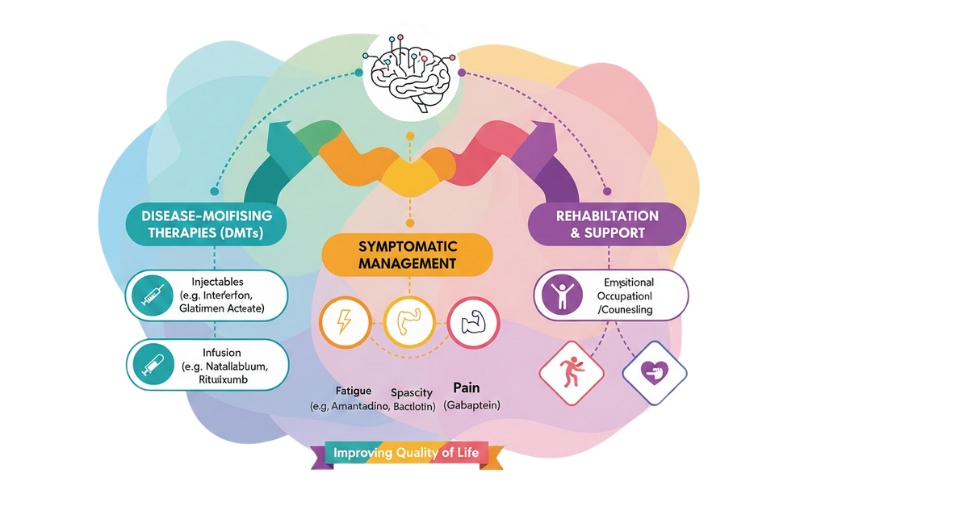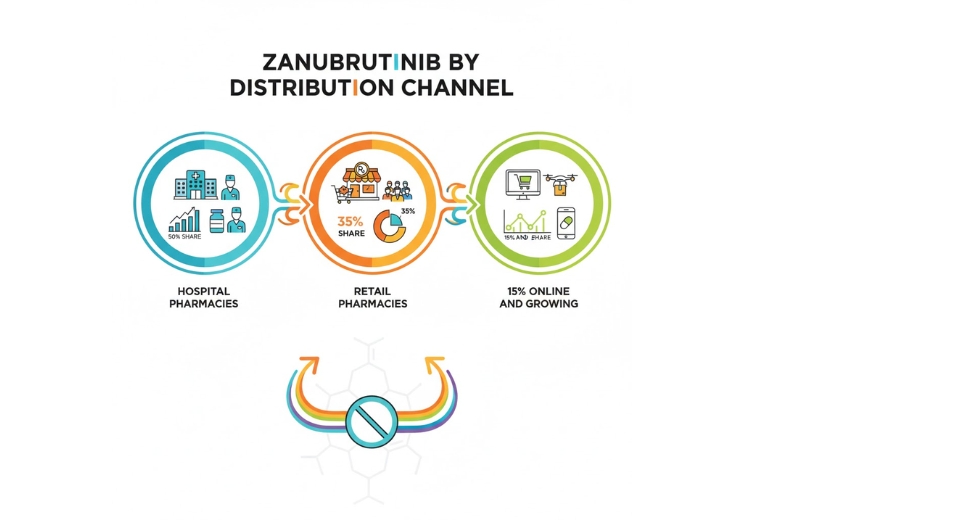MARKET OVERVIEW
This segment of the global healthcare and pharmaceutical industry will be marked by the introduction of hormone-based contraception and treatment as an emerging distinct solution. This market will continue to grow, considering increasing awareness and demand for non-invasive, long-lasting contraceptive methods. Vaginal rings, with the delivery of sustained drugs, will find more and more favor among women looking to move away from daily oral contraceptives. The innovation behind these rings is what will make them adopted as they provide a combination of convenience, effectiveness, and safety.
Advancements in product development will shape the global vaginal rings market, and manufacturers will focus on the improvement of efficacy and comfort of vaginal rings. The market, in addition to catering for contraceptive needs, will now also cater for hormone replacement therapies, and vaginal rings will play a dual role in managing symptoms associated with menopause. As the preference of consumers shifts toward convenience and efficiency, the need for products that require less frequent intervention, such as vaginal rings, will increase.
One of the main drivers for the market’s expansion will be the product’s ability to deliver sustained medication over extended periods. Unlike daily pills, vaginal rings offer a more seamless experience for users, which can lead to better adherence to contraceptive regimens. This unique feature is expected to increase their market penetration, particularly among women who prefer discreet and easy-to-use methods of contraception. With growing recognition by the health service providers about the benefits of vaginal rings for various treatments such as hormonal imbalance and irregular menstrual cycle, the scope of use in the market would go beyond its current contraception purpose.
Also, it would be subject to changes in the regulations. There will be many new product approvals of the vaginal ring from various worldwide regulatory bodies that will increase the size of the market. These regulatory agencies will significantly contribute to the safety and efficacy of the products, which in turn will increase consumer confidence. The global market will experience a steady rise as more clinical trials confirm the efficacy of vaginal rings for various purposes.
Despite the competition of implants, IUDs, and oral contraceptives as alternatives, vaginal rings will remain unique because of their own benefits. The desire for reversible and non-invasive treatment options will also work to the advantage of this market, thus it becomes a good investment opportunity. Additionally, public health campaigns and education programs will eventually enlighten people on the merits of vaginal rings, hence promoting the adoption of these rings into the mainstream contraceptive choices. Looking forward, in the future, the Global Vaginal Rings market would continue to change with all the technological developments, including newer
Global Vaginal Rings market is estimated to reach $2,568.8 Million by 2031; growing at a CAGR of 3.5% from 2024 to 2031.

GROWTH FACTORS
The Global Vaginal Rings market is going to witness significant growth in the coming years due to rising demand for long-acting reversible contraceptives and hormone therapies. With increasing demand among women for easy, safe, and reliable birth control methods, vaginal rings will be an effective solution since they require less frequent management than daily contraceptive pills. This shift mirrors a broader trend toward products that serve modern lifestyles, where convenience and efficacy are key considerations. Vaginal rings, which gradually release hormones over time, appeal to users who value consistency and minimal maintenance. This growing preference highlights the market's ability to meet evolving contraceptive needs.
Another factor driving market growth is increased awareness of hormone replacement therapies (HRT), particularly among menopausal women. During menopause, hormonal changes in women are extreme and cause discomfort, which may be manifested as mood swings, hot flashes, and general discomfort. Hormone therapy has emerged as a convenient method for alleviating symptoms without complicated routines. Increased access to health care and education have encouraged more women to seek such treatments, thus increasing the use of vaginal rings across all age groups.
But in Global Vaginal Rings market, challenges also lie as one to its growth. Vaginal products suffer significant stigmas associated with their usage across the various regions of a certain nation. People perceive wrongfully about its application, which is coupled by few conversations on the matter regarding the female reproductive system and causes a more broad hindrance. A huge majority still refrain from acceptance by understanding less, for this points out the urgency in executing a targeted education process.
Another limitation is the possibility of side effects, including irritation, discomfort, or hormonal imbalances, which some women experience when using vaginal rings. Although these side effects are not universal, they can discourage some users, and therefore, there is a need for continued research to improve product safety and comfort. Manufacturers can make vaginal rings more appealing and accessible to a larger audience by addressing these concerns. Looking ahead, innovation will be the most important aspect of the future of the Global Vaginal Rings market. It will then expand the functionality of vaginal rings and position them as a key tool in women's health care, not just as a contraceptive device but a tool for several health needs.
The Global Vaginal Rings market holds promise in the demand for convenient solutions for contraception and hormone therapy. While cultural barriers and side effects pose challenges, advancements in technology and educational initiatives are opportunities to address these issues. As innovation continues to refine the safety, functionality, and scope of vaginal rings, the market will be ready for expansion. In meeting the diverse healthcare needs of women around the world, vaginal rings can become a cornerstone of modern women's health solutions.
MARKET SEGMENTATION
By Type
Gradually, the Global Vaginal Rings market is getting more importance, primarily because of increased interest for sure and reliable non-invasive methods for contraceptives. Also, demand increases on grounds that require improvement in the care service to women. Main categories from where vaginal rings can be classified are hormonal and non-hormonal vaginal rings. Each offers something different, catering for varying demands and needs of every female globally.
The most popular form of birth control is the hormonal vaginal rings. They contain hormones, mostly estrogen and progestin, which will prevent a woman from becoming pregnant. This hormonal vaginal ring works in a manner whereby it controls the flow of these hormones into the blood, thereby preventing ovulation, making the cervical mucus thick, and reducing the uterine lining to be less welcoming to the fertilized egg. This system has proved to be a practical answer for the female patient who demands long-term use without the nuisance of daily application. More and more women require the ease and efficiency of reliable contraception; therefore, it will remain one of the most important segments of the Global Vaginal Rings market with advancements in technology. In the near future, it may further evolve providing a more sophisticated system for delivery of hormones along with fewer side effects.
On the other hand, non-hormonal vaginal rings represent an emerging trend in the market. Ideal for women who may not be able to tolerate hormonal contraception, or for those who have a preference for a method that won't interfere with their natural hormonal balance. Non-hormonal vaginal rings are increasingly preferred because they offer a reliable method of contraception without synthetic hormones. This area will expand because more women seek non-pharmacological alternatives in alignment with their personal health and wellness preferences. More personalized treatments by healthcare providers will lead to the popularity of non-hormonal options, providing an array of diverse solutions in the Global Vaginal Rings market. Going forward, continuous innovation and growth are expected in the Global Vaginal Rings market. As people learn about these methods of contraception, both hormonal and non-hormonal vaginal rings would be used to handle the reproductive health of women.
Future vaginal rings will provide more precise hormone delivery or maybe even hormones-free efficacy with further advancements in the materials and technology. Convenience, safety, and customization, on growing demand, will propel the vaginal ring market into continuous evolution to meet the wide range of needs in various women around the world.
By Material
The market for Global Vaginal Rings is growing steadily. Factors, including increasing awareness of reproductive health, growth in demand for more efficient and long-lasting contraceptive means are contributing to this. Vaginal rings are based on the materials used to manufacture them. The more prominent options include Silicone-based rings, Ethylene Vinyl Acetate (EVA) rings, and Polyurethane rings, on account of their unique properties.
Silicone-based vaginal rings have been widely accepted because of their flexibility, durability, and biocompatibility. These properties make them ideal for use in long-term contraceptive products. Silicone maintains its shape and integrity, even when exposed to bodily fluids over extended periods. As consumer preferences shift toward more comfortable and reliable solutions, silicone-based vaginal rings will continue to dominate the market. Their hypoallergenic properties also contribute to their demand, which minimizes the chances of irritation or allergic reactions from the user.
Ethylene Vinyl Acetate (EVA) rings are yet another material that is rapidly being accepted in the Global Vaginal Rings market. EVA provides strength and elasticity, with a soft texture, which makes them comfortable to use. These rings are also cost-effective, making them an attractive option for a broad segment of the market. The growing focus on affordable and accessible healthcare products will likely drive the adoption of EVA-based vaginal rings in various regions. Their ability to maintain their shape while being gentle on the body positions them as a promising option for the future.
Though not as prevalent in use as silicone and EVA, polyurethane rings are penetrating the market due to the material's lightweight nature and successful performance as a delivery vehicle for contraceptive hormones. Being durable and robust, this is a strong, yet pliable material, thus best used in the long run. As research and development regarding contraceptives continue, there is a possibility that polyurethane rings will be utilized even more in the future, especially where hormone-based contraceptive methods have seen an increase in demand.
Less used are other materials being investigated and found for making vaginal rings, some tailored to answer certain needs or fit their preferences in ways that the current market does not fulfill, and can easily be turned upside down. Innovation by material science is going to continue introducing new options at a certain time to guarantee comfort, safety, and enhanced efficacy in using them for vaginal ring products.
In the future, the Global Vaginal Rings market will most likely experience explosive growth because of advancements in the field of materials technology as well as an increased trend toward giving women a number of choices for effective, reliable contraceptive methods. Growing awareness in healthcare and increasing demands for comfort and long use will be the reasons to sustain growth in the market in the years to come. More and more women will be looking for convenient and reliable reproductive health solutions, thus increasing the demand for vaginal rings made of different materials, such as silicone, EVA, and polyurethane.
By Application
The Global Vaginal Rings market is fast-growing and highly diversified sector, divided into different regional distributions that satisfy the needs and desires of diverse populations. Geography-wise, the market exists in North America, Europe, Asia-Pacific, South America, and the Middle East & Africa. Each contributing region propels the comprehensive growth and development of the market with the help of growth factors like health care up-gradation, consumer’s awareness, and regional propensity.
The regional market is dominated by North America, mainly in the United States, Canada, and Mexico. There is an expectation of growth in the use of vaginal rings because awareness of reproductive health and birth control methods is on the rise. With well-established health care infrastructures and very high disposable incomes, North America constitutes an important market for novel products. This growth in vaginal rings is anticipated with more and more women opting for simple and effective methods of birth control. The United States being a leader in healthcare research and development is likely to play a crucial role in shaping the future of this market.
In Europe, countries such as the UK, Germany, France, and Italy are at the forefront in adopting vaginal rings as an increased concern for women’s health and family planning services. The European market has a mix of public health policies and private healthcare systems with differing regulations in each country. The support from the European governments to the family planning initiatives will boost the demand for more accessible and user-friendly contraceptive methods such as vaginal rings. Countries in this region can expect a steady increase in the use of vaginal rings with the increasing trend for convenience and non-daily solutions for birth control.
The Asia-Pacific region will experience the fastest growth of the Global Vaginal Rings market. Countries such as India, China, Japan, and South Korea will lead the future of the market. With Asia’s middle class growing in size, more women in these countries become conscious of their contraceptive needs and are looking for more modern alternatives than traditional methods. The market in this region is likely to grow with an increasing demand for women’s health care, supported by government initiatives and improvements in healthcare infrastructure.
South America, particularly in countries like Brazil and Argentina, also has growth potential. As health care access and awareness about reproductive health are enhanced, more women in South America will opt for vaginal rings as an efficient contraceptive measure. In addition, the Middle East & Africa region will have a gradual increase in market. Countries like GCC nations, Egypt, and South Africa will witness growth in demand because women’s health is the focus of public health policies.
Overall, the Global Vaginal Rings market is likely to expand across all regions, driven by increased awareness, improved healthcare access, and a growing preference for convenient, non-invasive contraceptive solutions. As countries worldwide focus more on women’s health, the market for vaginal rings will evolve to meet the changing needs and expectations of women everywhere.
|
Forecast Period |
2024-2031 |
|
Market Size in 2024 |
$2,044.5 million |
|
Market Size by 2031 |
$2,568.8 Million |
|
Growth Rate from 2024 to 2031 |
3.5% |
|
Base Year |
2022 |
|
Regions Covered |
North America, Europe, Asia-Pacific Green, South America, Middle East & Africa |
REGIONAL ANALYSIS
The Global Vaginal Rings market is a dynamic, growing market, which is separated into distinct regional divisions according to the needs and demands of various populations. Geographically, this market spreads across North America, Europe, Asia-Pacific, South America, and the Middle East & Africa. Therefore, all the regions involved in the market contribute toward its growth and development as well, mainly driven by factors like healthcare advancements, consumer awareness, and regional preferences.
North America holds a significant position in the market, particularly in the U.S., Canada, and Mexico. The demand for vaginal rings in this region is expected to increase due to the growing awareness of reproductive health and contraception methods. With a well-established healthcare infrastructure and high disposable incomes, North America presents a key market for innovative products. More women will look for convenient and effective birth control methods, leading to the growth of the vaginal rings market. The U.S. is a world leader in healthcare research and development, and it will continue to play a central role in shaping the future of the market.
In Europe, the UK, Germany, France, and Italy are the front-runners in the adoption of vaginal rings, driven by an increasing focus on women's health and family planning services. The European market is characterized by a blend of public health policies and private healthcare systems, with varying regulations across different nations. As European governments continue to endorse family planning programs, it is expected that more accessible and user-friendly forms of contraceptive methods, like vaginal rings, will be in demand. Countries in this region are most likely to see a steady increase in the use of vaginal rings, especially with the growing trend towards convenience and non-daily birth control solutions.
The Asia-Pacific region is expected to exhibit the most rapid growth in the Global Vaginal Rings market. Countries such as India, China, Japan, and South Korea will play key roles in determining the direction of this market. Expanding Asian middle class results in greater awareness about more advanced methods of contraception in their women; they will find an alternative to conventional family planning practices. Demand will probably increase in the region because women's healthcare is gaining importance, helped by the government and the country's infrastructure development in healthcare services.
The potential market in South America can be seen in regions like Brazil and Argentina. As access to healthcare improves and awareness of reproductive health increases, more women in South America will likely opt for vaginal rings as a relatively good contraceptive method. There also will be gradual expansion of this market in the Middle East & Africa. Such demands will increase in GCC countries, Egypt, and South Africa as women's health attracts much attention in the country's public health policy strategies.
Overall, the Global Vaginal Rings market is expected to continue its expansion across all regions, driven by increased awareness, improved healthcare access, and a growing preference for convenient, non-invasive contraceptive solutions. As countries around the world focus more on women's health, the market for vaginal rings will evolve to meet the changing needs and expectations of women everywhere.

COMPETITIVE PLAYERS
The Global Vaginal Rings market is expected to take off in the next coming years with ongoing improvements in healthcare, growing awareness about the reproductive health, and enhanced demand for easy and efficient drug delivery systems. With vaginal rings, the ability to provide women with consistent and sustained release of medicine or hormones makes it one of the reliable choices available for birth control and also other therapeutic treatments. Their ease of use and extended effects have made them popular alternatives to conventional methods of daily pills or injections. As access to health care has improved in most regions and is now reaching developing areas, the demand for this kind of product is further expected to rise. Industry leaders have contributed to their market by innovating through continuous research and strategic cooperation.
Some of the top companies in this industry are Merck & Co., Inc., Bayer AG, Pfizer Inc., Teva Pharmaceuticals, Organon & Co., and TherapeuticsMD, Inc. These firms are not only investing in new product development but are also working to expand their presence in emerging markets, which is critical as focus on women’s healthcare is a global priority. These companies are trying to bridge the gaps of accessibility and affordability so that vaginal rings reach a wider population. Competitive players are also expanding product lines and adopting advanced technologies to make vaginal rings more efficient and safe.
The development of bio-compatible materials and improved drug delivery mechanisms has greatly improved the performance of these products. Such advancements ensure better patient comfort, fewer side effects, and longer benefits, which add up for user satisfaction and trust. In the coming years, this is likely to shift and focus more on personalizations of treatments catering to very specific patient needs and conditions. This might even expose new opportunities in the market, making it all more dynamic. Increased partnerships and collaborations between pharmaceutical companies and healthcare providers will also contribute to the growth of the market.
This will help the stakeholders in educating healthcare professionals and patients about the benefits of vaginal rings, which will eventually increase adoption. Government initiatives and policies supporting women’s health will also drive the market forward, offering incentives for research and distribution. The future of the Global Vaginal Rings market appears to be positive in light of innovative activities brought into play by the competition present. The future development regarding accessibility, efficiency, and usability will definitely support high demand for vaginal rings products in the years ahead because their contribution toward enhancing modern health systems will remain evident with growing awareness about various products that benefit female sexual and reproductive health across all geographical locations.
Vaginal Rings Market Key Segments:
By Type
- Hormonal Vaginal Rings
- Non-Hormonal Vaginal Rings
By Material
- Silicone-Based Rings
- Ethylene Vinyl Acetate (EVA) Rings
- Polyurethane Rings
- Others
By Application
- Contraception
- Hormone Replacement Therapy (HRT)
- Menopause Management
- Controlled Drug Delivery for Vaginal Infections
- Treatment of Conditions like Vaginal Dryness
By Distribution Channel
- Hospitals
- Clinics
- Retail Pharmacies
- Online Pharmacies
Key Global Vaginal Rings Industry Players
- Merck & Co., Inc.
- Bayer AG
- Pfizer Inc.
- Teva Pharmaceuticals
- Organon & Co.
- TherapeuticsMD, Inc.
WHAT REPORT PROVIDES
- Full in-depth analysis of the parent Industry
- Important changes in market and its dynamics
- Segmentation details of the market
- Former, on-going, and projected market analysis in terms of volume and value
- Assessment of niche industry developments
- Market share analysis
- Key strategies of major players
- Emerging segments and regional growth potential








 US: +1 3023308252
US: +1 3023308252






